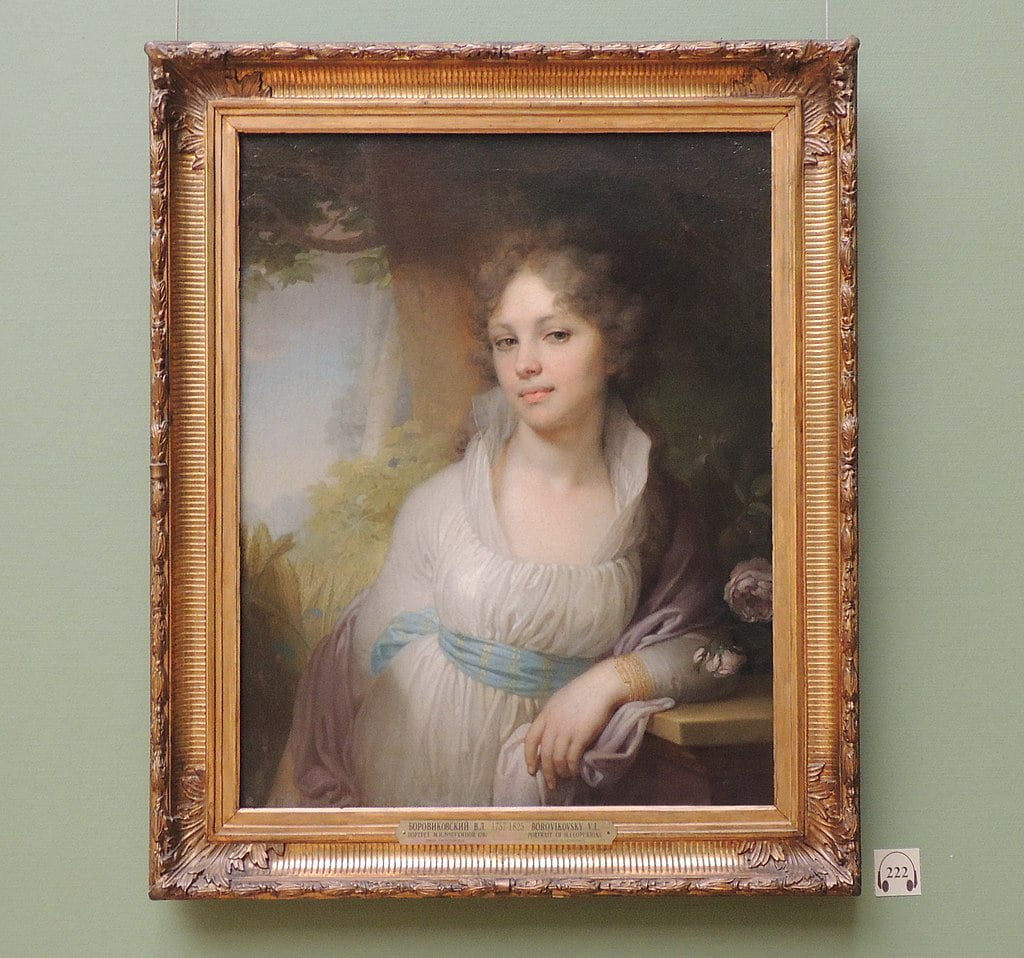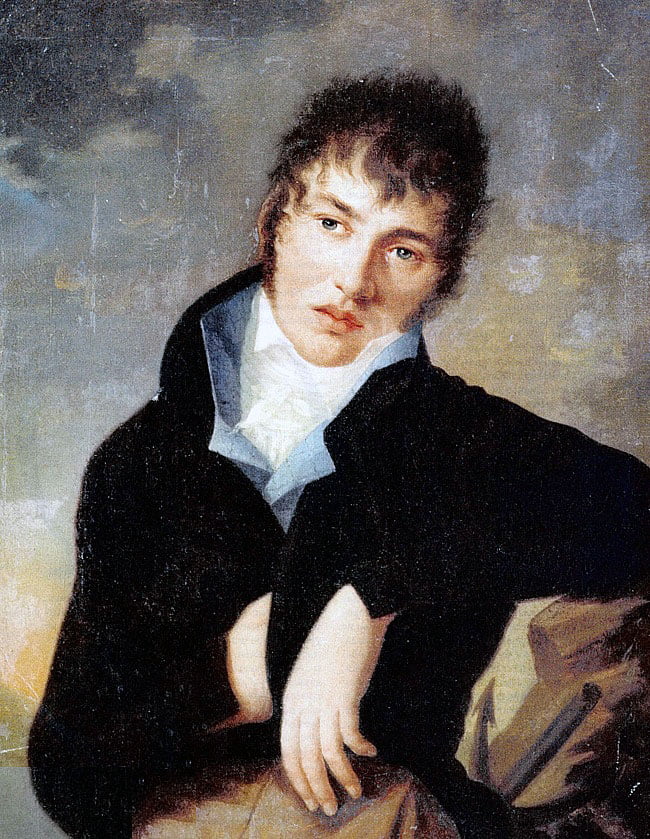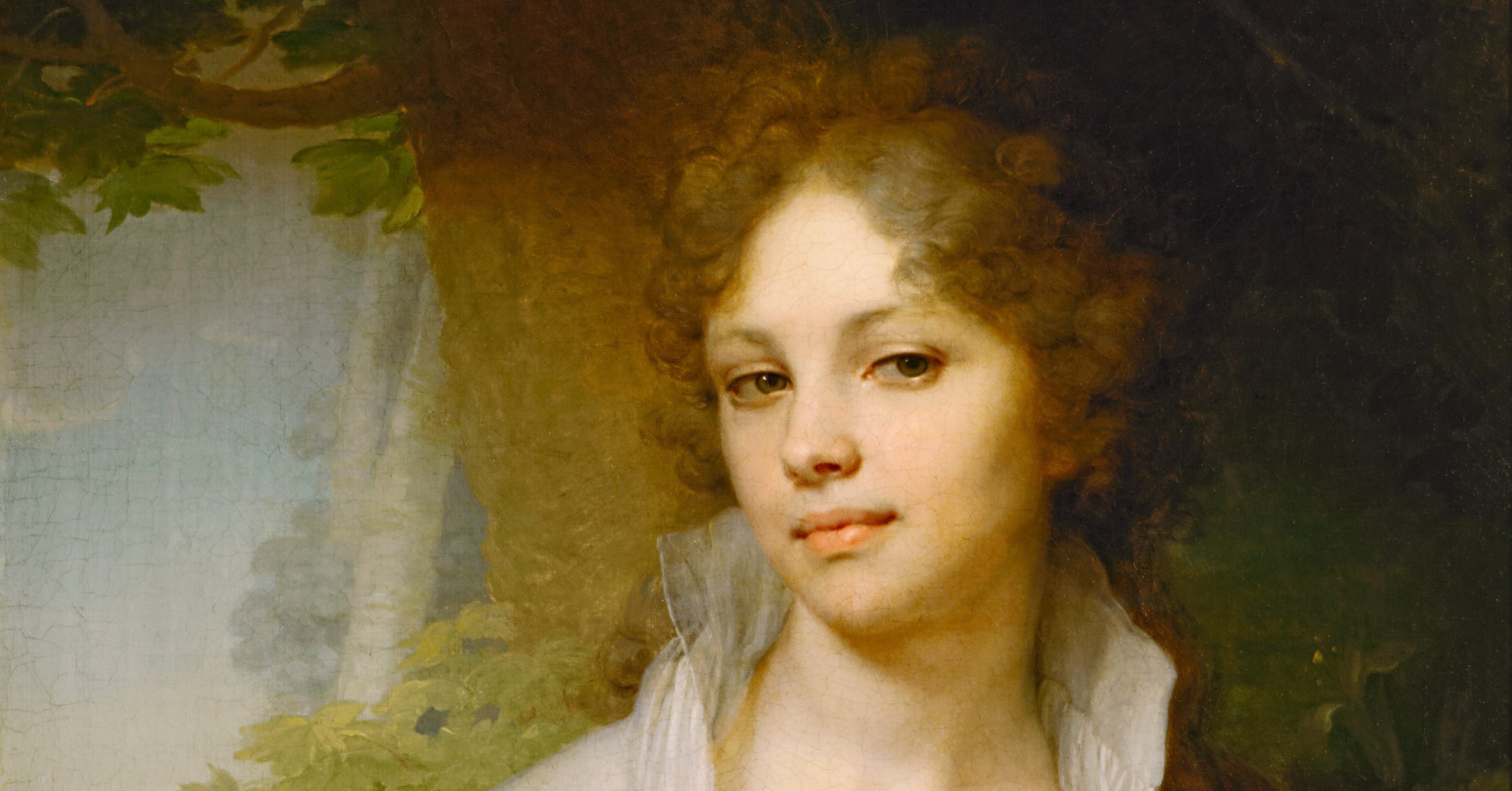Stories about the fate associated with this picture are regularly found on the Internet and even in some popular science publications. We checked whether they really existed in the 19th century.
The portrait of Maria Lopukhina, painted in 1797, is considered one of the main masterpieces of the artist Vladimir Borovikovsky. An 18-year-old girl is pictured here in the year of her wedding to a man who was ten years older. Five years later, Lopukhina died of consumption. These sad facts on the Internet are overgrown with mystical details, as if owning a painting or even looking at it brings misfortune.
Similar stories are presented in many sources. “In Pushkin’s time, it was believed that if a young unmarried girl looked at this picture, she herself would soon die from a terrible disease. There were rumors that the portrait was fatal for more than a dozen young beauties,” the portal reports "Secrets.net". “In the capital’s salons they gossiped that Lopukhina’s portrait claimed the lives of about a dozen girls of marriageable age,” they write "Independent publication Sokolniki" and Valentina Spirina in the book “The third son of winter. Nine Lives". Author of the text published on the portal "Valuevo Estate", clarifies: “After her (Lopukhina. - Ed.) death, the portrait began to become overgrown with mystical rumors. The deceased looked so realistically, vividly and mysteriously from the canvas that people began to think that her father, Master of the Masonic Lodge and famous mystic Ivan Tolstoy, managed to lure his daughter’s soul into this picture.” Some sources have clarifications that after the purchase of the painting by Pavel Tretyakov, the myth was dispelled. This theme is also exploited in the recent book by Irina Shlionskaya "Mystical Art: Hidden Meanings and Controversial Theories".
Several scientific monographs and many articles are dedicated to Vladimir Borovikovsky. Art critics also paid attention to the portrait of Lopukhina - in 2019, the Tretyakov Gallery even released a separate brochure Ekaterina Evseeva about this painting in the series “The History of a Masterpiece.” None of these texts report any of the rumors that circulated around the painting in the 19th century. Evseeva even specifically emphasizes: “Various legends arose around the portrait. Despite all the obvious apocryphal nature, and sometimes complete absurdity (from soap opera-style stories about a romance between an artist and his model to a mystical plot about a spell cast on a portrait), they turned out to be extremely tenacious and are reproduced again and again. The task of this small publication is to free Lopukhina’s portrait from the adhering “shell rock” of speculation, myths and gossip.”
There are virtually no references to this portrait in the 19th century (before it was included in the Tretyakov Gallery collection). Apparently, the earliest is an episode from the life of the poet Yakov Polonsky dating back to approximately 1885. How write biographers, he saw the painting in a Moscow house, “fell in love” with the painting and wrote a poem "To the Portrait", which is now often remembered when talking about the picture.
It has long passed, and those eyes are no longer there
And that smile that was silently expressed
Suffering is the shadow of love, and thoughts are the shadow of sadness.
But Borovikovsky saved her beauty.
So part of her soul did not fly away from us,
And there will be this look and this beauty of the body
To attract indifferent offspring to her,
Teaching him to love, suffer, forgive, be silent.
The poem “To the Portrait” is dated January 1885, but it was published in the newspaper “Early Morning” only in 1913 (after the author’s death) and without a title - with the message that an unknown person donated this sheet of paper with Polonsky’s text to the Tretyakov Gallery. The clarification that these are poems “to the portrait of M. I. Lopukhina” appeared in later publications.

(photo by the author)
Apparently, this poem, in which the author hints at the tragic fate of the model, became the first step towards the formation of a modern Internet legend about the fatal portrait. It became known to the general public after Mikhail Gershenzon cited it in his book "The Wisdom of Pushkin" (1919), then the poem was often mentioned by scientists, literary scholars and philologists, including Yuri Lotman, which contributed to the growth of the portrait’s popularity.
Art critic Nina Moleva in the rather late (published in 2010) book “Portrait of a Lieutenant in Love, or Voyage of the Empress”, nothing doesn't write about mystical rumors, although Borovikovsky is one of the main characters of the text. The author is aware of another speculation related to the fact that the husband was older than Lopukhina. “Arose in our century, undoubtedly under the impression of Polonsky, the version about the unsuccessful marriage of M.I. Lopukhina does not find confirmation in the family archives,” Moleva reports. It is curious that the art critic blames the poet for this. Boris Kraevsky in the book “Lopukhins in the history of the Fatherland. To the 1000th anniversary of the family" (2001) also does not write about mysticism or tragedy.
Moreover, at the end of the 18th century, Lopukhina’s early death from consumption would hardly have been considered something unique - at that time such things were quite common widespread phenomenon. Yakov Bulgakov, who informs his son about Maria’s death in his correspondence (“Prince S.I. Golitsyn is in new sadness: the wife of his cousin Stepan Avraamovich Lopukhin has died”), notes this event only because the mentioned Golitsyn is married to his niece, that is, it is simply a family grief.
At the same time, there are plenty of memories of the house where the portrait most likely hung in Pushkin’s era. Evseeva suggests that after Lopukhina’s marriage in 1797, the painting could have remained as a keepsake in her parents’ house, and then passed on to her brother, the famous Fyodor Tolstoy the American, who died in 1846. At the very least, it is indisputable that in 1885 the painting was owned by his daughter, Moscow governor Praskovya Fedorovna Perfilyeva. The portrait of Tolstoy the American by an unknown artist (possibly S.S. Kurlyandtsev) compositionally and in mood resembles the portrait of his sister, Evseeva points out, and, apparently, in 1803 was painted with an eye on him or even to be hanged in a pandan. However, despite the fact that many contemporaries have left testimonies about Fyodor Tolstoy because of his colorful lifestyle, the “fatal” portrait of his sister is never mentioned in them, although it would fit perfectly into the mosaic of his personal legend.

State Museum of Leo Tolstoy
Pavel Tretyakov bought the painting from Fyodor Tolstoy’s daughter between 1885 and 1890, but he did not dispel any “terrible myth” with this purchase, according to the memories of his family. Tretyakov's daughter reports just: “I must point out Pavel Mikhailovich’s love and admiration for the “old people,” a love that he fully conveyed to us. He had several wonderful portraits by Borovikovsky, of which we especially loved “Lopukhina.”
Finally, let’s dwell on the phrase “as if her father, Master of the Masonic Lodge and famous mystic Ivan Tolstoy managed to lure his daughter’s soul into this picture.” Its authors apparently confused Maria Lopukhina’s father, Count Ivan Andreevich Tolstoy (1747–1811), a completely ordinary historical figure, with his contemporary, a truly famous freemason Ivan Vladimirovich Lopukhin (1756–1816), author of the mystical book “The Inner Church” - notes where he talks in detail, in particular, about the persecution of Freemasons by Catherine the Great.
Not true
- Lecture by Ilya Doronchenkov “The Formation of Russian Painting: Portrait of the 18th Century”
- Sofya Bagdasarova. The fates of beauties from famous portraits
If you find a spelling or grammatical error, please let us know by highlighting the error text and clicking Ctrl+Enter.







